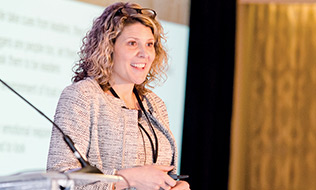

Participants at Benefits Canada’s Defined Contribution Plan Summit spent two days listening to a large roster of speakers offer up solutions on everything from communication tips about plan changes to strategies for allocating members’ assets. So what were some of the key learnings?
Janice Holman, defined contribution practice leader at Eckler Ltd., helped sum up some of the key learnings during the closing session at the February event.
Read: DC Plan Summit: Why financial education isn’t enough to change employee behaviour
“There was a lot of great stuff,” said Holman. “If we can keep the main themes in our head, we can improve member retirement outcomes.”
Holman cited the opening keynote presentation by Punam Keller of the Tuck School of Business that focused on the role of emotions in decisions about key matters such as health and finances. The implication is that those involved in defined contribution plans need to pay more attention to techniques such as enhanced active choice and declining financial incentives as ways of encouraging certain behaviours. Holman also reiterated the connection between health and wealth and the possibility of adapting the lessons learned from consumer marketing campaigns to the pension industry.
Another opportunity stems from the potential to better harvest pension plan information and other data points — such as the probability that members will meet contribution targets and projected income replacement ratios — in order to improve plan management. That implies working with service providers to better understand plan members, how their savings are accumulating and their financial and wellness constraints and needs, Holman noted.
Read: DC Plan Summit: A look at the attitudes of DC members around the world
While data can be very helpful, it’s important to consider privacy concerns, said Holman. With that in mind, she suggested identifying a privacy champion in each organization as a good way to start.
It’s also important to remember that plan members may not be paying enough attention to a changing environment that includes increased longevity, health-care costs and debt. Among the solutions are more personalized communications that provide a better picture of potential outcomes, Holman noted. “Only when members understand their own personal financial picture will they engage and make the change required,” she said.
Get a PDF of this article.
Read more coverage from the 2018 DC Plan Summit.
